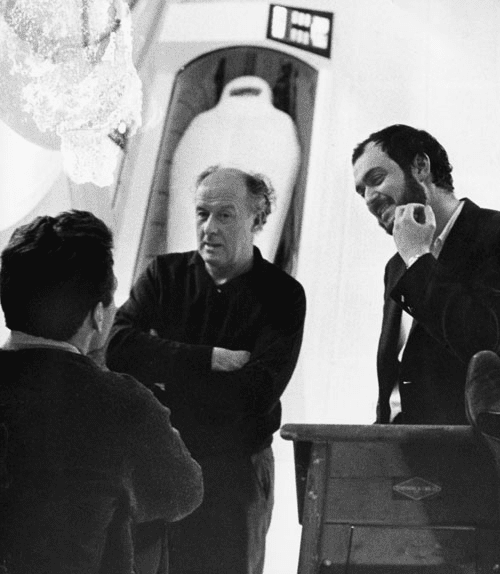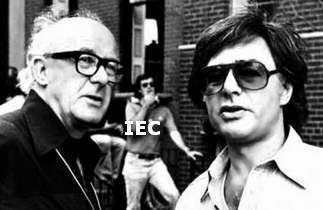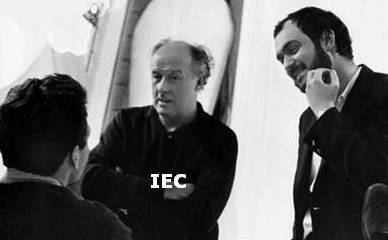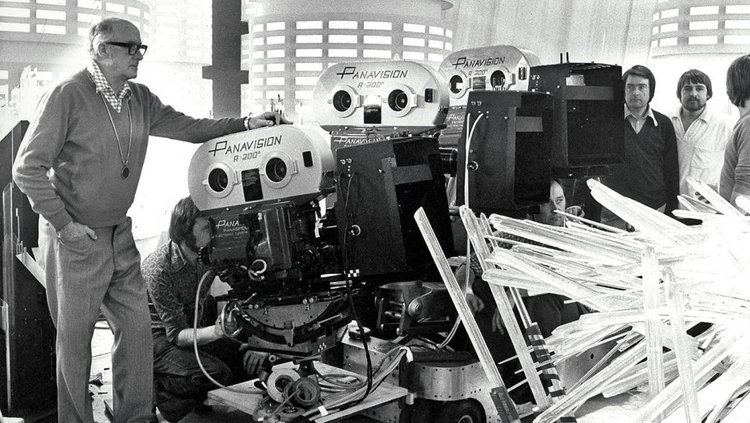Nationality British Role Cinematographer Name Geoffrey Unsworth | Years active 1939-1978 Occupation Cinematographers | |
Full Name Geoffrey Gilyard Unsworth Spouse Maggie Unsworth (m. ?–1978) Movies Superman, 2001: A Space Odyssey, Superman II, Tess, Superman II: The Richard Similar People Alexander Salkind, Pierre Spengler, Tom Mankiewicz, Ilya Salkind, Phyllis Thaxter | ||
Tess Wins Cinematography: 1981 Oscars
Geoffrey Gilyard Unsworth, OBE, BSC (26 May 1914 – 28 October 1978) was a British cinematographer who worked on nearly 90 feature films spanning over more than 40 years. He is best known for his work on films such as Stanley Kubrick's 2001: A Space Odyssey, Bob Fosse's Cabaret and Richard Donner's Superman.
Contents
- Tess Wins Cinematography 1981 Oscars
- Cabaret Wins Cinematography 1973 Oscars
- Career
- Death and legacy
- Actor
- References

Cabaret Wins Cinematography: 1973 Oscars
Career

Unsworth began his career working at Gaumont British from 1932 to 1937. Having joined Technicolor in 1938, he acted as assistant director of photography on many notable productions, such as Powell and Pressburger's The Life and Death of Colonel Blimp (1943) and A Matter of Life and Death (1946). After working on some of the Gainsborough melodramas, he worked at the Rank Organisation throughout the 1950s, notably on films such as A Town Like Alice and A Night to Remember.

In the 1960s, Unsworth's work extended abroad, such as with the 1962 CinemaScope epic The 300 Spartans; the decade also saw him receive his first Academy Award nomination for his work on 1964's Becket. In 1965, he was responsible for photographing the Royal National Theatre's production of William Shakespeare's Othello.

His film work brought him an impressive array of awards, including five British Society of Cinematographers awards, three BAFTAS and two Academy Awards. Unsworth was especially in demand as cinematographer in two very different genres, period pieces and science fiction. Among the highlights of his career, he collaborated with Stanley Kubrick on the visually innovative 2001: A Space Odyssey (on which he was assisted by John Alcott, who would become a regular collaborator of Kubrick's) and Bob Fosse's dark musical exploration of the end of Weimar Germany, Cabaret. In Sidney Lumet's 1974 film adaptation of Agatha Christie's Murder on the Orient Express, his lighting and use of diffusion capture the danger and romance of the train while graceful integration of camera movement and optical effects contributes to the realism of the set while controlling the claustrophobia of the setting.
Unsworth's work reached its widest audience with one of his final projects, Richard Donner's Superman in 1978. Here he was responsible for integrating the work of a who's-who of cinematographers and visual effects designers (including Zoran Perisic, an animation stand crew member from 2001, who extended Kubrick's front projection technique for Superman), with the plausibility and sense of grandeur befitting a (mostly) reverent take on a superhero. The style he developed alongside director Donner was essentially that of a science-fiction period film; the glamorous, often highly diffused cinematography observed a panoply of images of Americana, suggesting an epic timeframe for the film's scenes, a mythical America somewhere between the 1930s of the original comics and the 1970s. The style of the sequences that did not involve extensive science-fiction elements had to match scenes displaying Superman's extraordinary powers.
Unsworth's other work in the 1970s included the Oliver Cromwell biopic Cromwell in 1970, the 1972 John Barry musical Alice's Adventures in Wonderland, John Boorman's 1974 fantasy film Zardoz, The Return of the Pink Panther (the fourth film in Blake Edwards' Pink Panther series), Richard Attenborough's 1977 war epic A Bridge Too Far. In 1981 he won a posthumous Oscar for Best Cinematography for his collaborative work with Ghislain Cloquet on Roman Polanski's Tess.
Unsworth was not named in the Special Achievement in Visual Effects Academy Award the film received, but instead as Director of Photography, and without a separate credit for special effects work he would not have been eligible. Donner expressed great disgust that the Academy of Motion Picture Arts and Sciences did not recognise Unsworth with an Academy Award nomination for Best Achievement in Cinematography in 1979.
Death and legacy
Unsworth died of a heart attack in France at the age of 64 while filming Roman Polanski's Tess in 1978.
Both Superman and The First Great Train Robbery were dedicated to Unsworth's memory. As alluded to in the Superman dedication, Unsworth was an Officer of the Order of the British Empire.
He was also admired for his charming manner at work. For instance, Margot Kidder was flattered when he arranged lighting for her shots and insisted on concentration by saying, "Quiet, I'm lighting the Lady." His wife, Maggie Unsworth, worked in the British film industry, often as a script/continuity supervisor.
